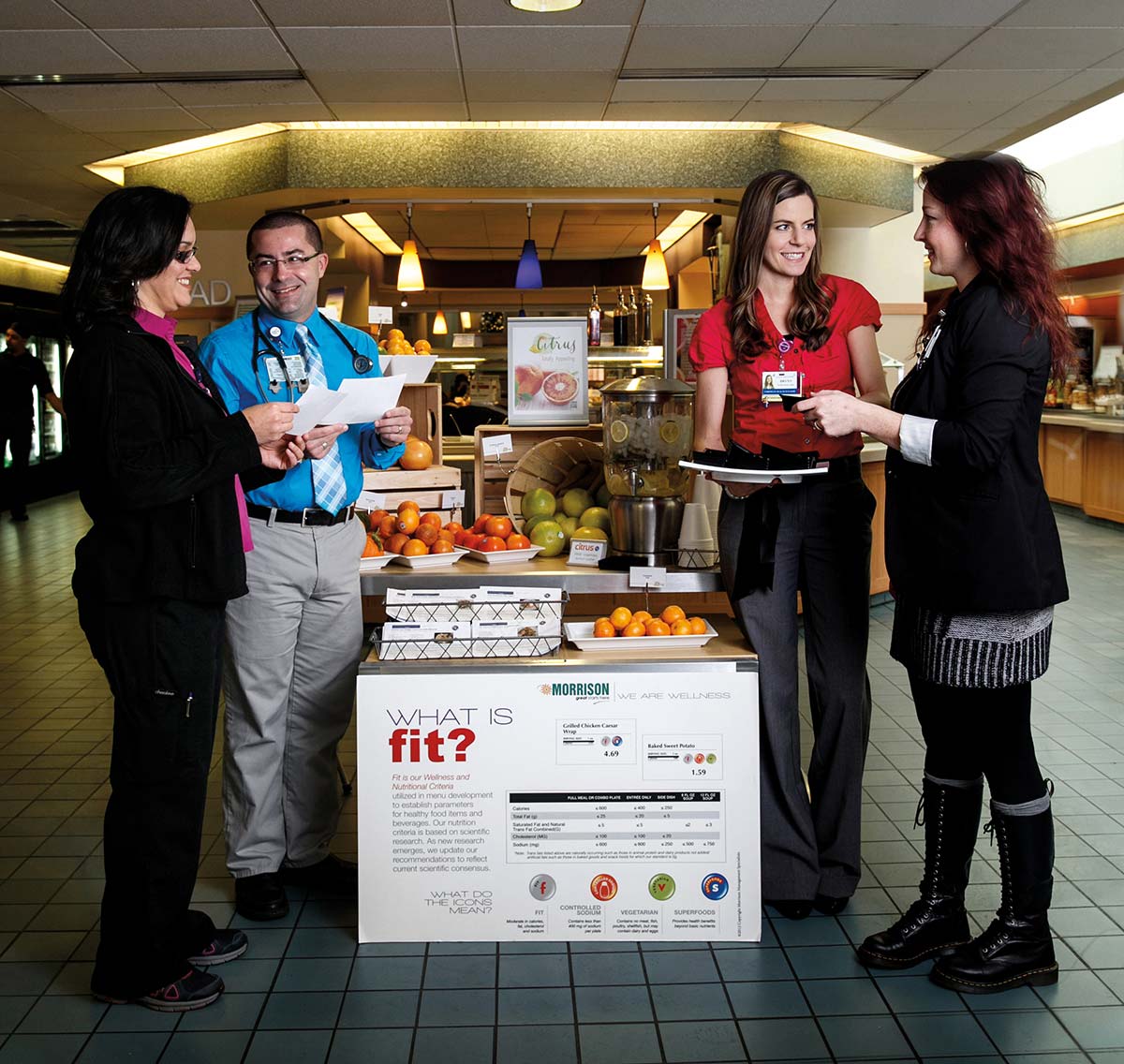Platinum Award/Large Business Category
With more than 7,000 employees, Lancaster General Health is the largest employer in Lancaster County. Including employees’ spouses, LG Health’s wellness program Ω MyHealthyLiving Ω encompasses more than 11,000 individuals. The comprehensive program involves personnel in every department throughout the health system, including service and maintenance staff, office and IT workers, nurses, doctors and other healthcare providers.
LG Health was at the forefront of the workplace wellness movement when it launched a program in 1992. “People who work in healthcare are so committed to being good caregivers that sometimes they put other people’s health needs ahead of their own,” says Alice Yoder, LG Health’s Director of Community Health. “We started our workplace wellness program to encourage employees to focus on their health, too. It only made sense that we heed our mission statement – ‘To advance the health and well-being of the communities we serve’ – and take care of our own.”
The Unique Factor: Lancaster General Health not only operates its own Well Workplace program, MyHealthyLiving, but it also helps companies throughout Lancaster County establish programs of their own. LG Health also facilitates screenings and other services for companies with Well Workplace programs.
Because employees work at sites located across Lancaster County, communication might qualify as the most challenging aspect of the MyHealthyLiving program. “We are faced with dealing with multiple shifts, multiple locations and multiple levels of employees,” notes Alice. “It is important for our program to be convenient, easy to understand and accessible to employees who are healthy as well as those with medical conditions.”
The MyHealthyLiving Team plans, develops and implements the program’s activities. In addition, 190 Champions, who help to promote the program and address questions and suggestions, can be found in all departments. Employees can also access the MyHealthLiving webpage and learn about upcoming events, seminars, classes, etc.
LG Health’s program, which is voluntary, is incentive-based. The first step involves undergoing a health screening and completing the online health risk assessment. After employees complete those steps, they earn cash rewards and become eligible to continue earning “MyHealthyLiving Reward$” throughout the year. The results of the screening are posted to employees’ MyLGHealth online accounts, which can be accessed directly by the participants and shared with their primary care providers.
Alice views the health assessment as another key to maintaining optimal health in the future. The assessment could be part of employees’ healthcare records, providing them with the opportunity to discuss results and set goals with their personal physicians. “These partnerships are the wave of the future,” she says. “It will eliminate the duplication of services and improve quality of care.”
In addition to completing the screenings and health risk assessment, all employees and spouses can enroll in one-on-one coaching. According to Brynn Kline, Manager of Corporate Health, “Health coaching can be conducted in person or over the phone. Our health coaches work with employees to create realistic goals and action plans as they work through challenges and celebrate their successes.”
Quarterly programming is offered to keep employees engaged and may include seminars, online modules and challenges that address priorities such as physical activity, nutrition, and stress and time management. Cooking demonstrations are also offered that touch on such topics as revamping recipes and healthier prep techniques. “We want people to learn and practice new skills,” notes Brynn. “We design our programs according to the feedback we receive. Keeping it fresh and innovative can be a challenge but is also a priority.”
Quarterly challenges not only keep employees engaged, but they also build camaraderie. Goal-oriented programs, such as Lose it at Work and Send Stress Packing (aimed to practice stress management techniques), have proven to be very popular with employees.
The employee fitness center at the hospital location is open 24/7. Free fitness classes are held at multiple locations. “We’re offering Zumba for the first time, and the classes filled immediately,” Brynn reports. Walking and running clubs exist and the buildings on the health campus are mapped out for walking. Alice notes that “walking meetings” have become popular with LGH personnel.
LG Health is unique in that it has on-site dining areas at its hospitals and at several outpatient locations. Healthy eating has become their mantra. “We’re working closely with food services to create healthy environments,” says Brynn. Together they have formulated a FIT criteria that addresses concerns such as fat, sodium and caloric levels. If an item exhibits a FIT label, it’s good for the diet.
Healthy choices are also more readily available at checkout and healthy options are available in vending machines and cafeterias. “Our ultimate goal is to make the healthy choice the easy choice,” Brynn points out.
Smoking, of course, has been prohibited on LG Health properties for years. And, the no-smoking ban has been taken to the next level: “We do not hire tobacco users,” Alice states. The policy, which supports community goals, has had positive results. In 2000, 23% of adults in Lancaster County used tobacco products. Today, that number is down to 13%, which is lower than the state’s average.
The program’s statistics speak for themselves. The Health Risk Assessment data evaluates 13 risk factors and during the 2013-14 period, overall improvements were seen in 10 of those categories. Rates of absenteeism and presenteeism (when employees report for work but are not well) have also improved. With these improvements, the program estimated cost saving by reducing health risks was $302 per participant. That translates to more than $1.2 million.
The program’s plans include placing a stronger focus on mental well-being and access. “The stigma needs to be overcome,” says Alice. “Poor mental health is a predictor of physical health. There’s a greater acceptance of that connection.”
Both Alice and Brynn maintain that programs such as MyHealthyLiving can only be successful with support from leadership. “We’re very fortunate. Our President and CEO Thomas E. Beeman, and our Executive Vice President and COO Jan Bergen are very committed and engaged,” Alice points out. Indeed, Tom Beeman shared in the Fall 2014 employee newsletter, The Experience, that his own health screening pointed to some problematic areas and given the choice between taking medication or making lifestyle changes, he chose the latter. And, he says the regimen he chose made him feel better about his own health, as well as the health of the program.


Leave a Reply